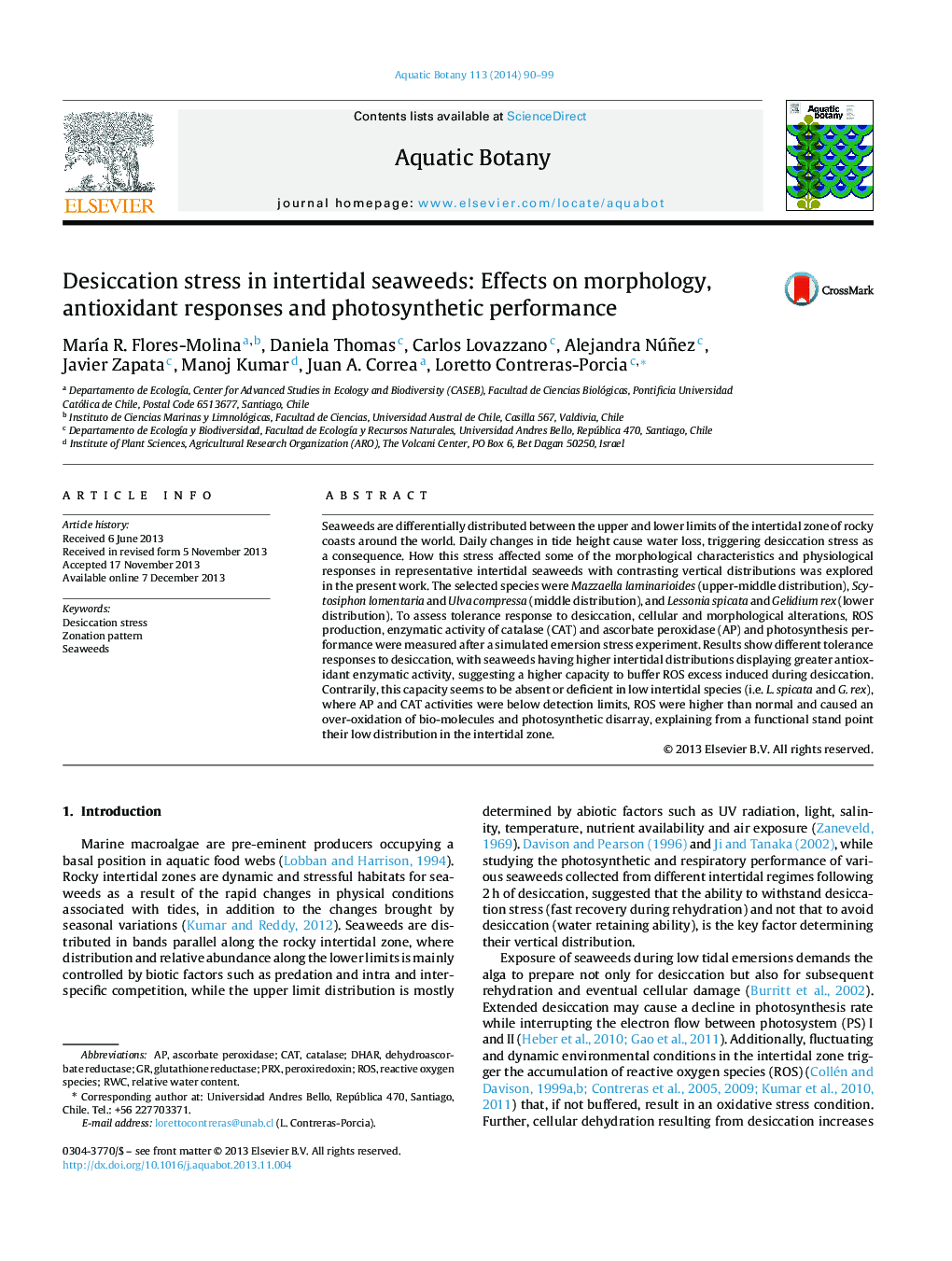| کد مقاله | کد نشریه | سال انتشار | مقاله انگلیسی | نسخه تمام متن |
|---|---|---|---|---|
| 4527873 | 1625829 | 2014 | 10 صفحه PDF | دانلود رایگان |
• Air exposure induces a desiccation stress condition in intertidal seaweed species.
• High activities of antioxidant enzymes and low ROS production were the responses in higher intertidal species.
• Photosynthesis capacity was recovered during rehydration only in higher intertidal species.
• Lower intertidal distribution of certain algal species is explained by their insufficient mechanisms of stress tolerance.
Seaweeds are differentially distributed between the upper and lower limits of the intertidal zone of rocky coasts around the world. Daily changes in tide height cause water loss, triggering desiccation stress as a consequence. How this stress affected some of the morphological characteristics and physiological responses in representative intertidal seaweeds with contrasting vertical distributions was explored in the present work. The selected species were Mazzaella laminarioides (upper-middle distribution), Scytosiphon lomentaria and Ulva compressa (middle distribution), and Lessonia spicata and Gelidium rex (lower distribution). To assess tolerance response to desiccation, cellular and morphological alterations, ROS production, enzymatic activity of catalase (CAT) and ascorbate peroxidase (AP) and photosynthesis performance were measured after a simulated emersion stress experiment. Results show different tolerance responses to desiccation, with seaweeds having higher intertidal distributions displaying greater antioxidant enzymatic activity, suggesting a higher capacity to buffer ROS excess induced during desiccation. Contrarily, this capacity seems to be absent or deficient in low intertidal species (i.e. L. spicata and G. rex), where AP and CAT activities were below detection limits, ROS were higher than normal and caused an over-oxidation of bio-molecules and photosynthetic disarray, explaining from a functional stand point their low distribution in the intertidal zone.
Journal: Aquatic Botany - Volume 113, February 2014, Pages 90–99
